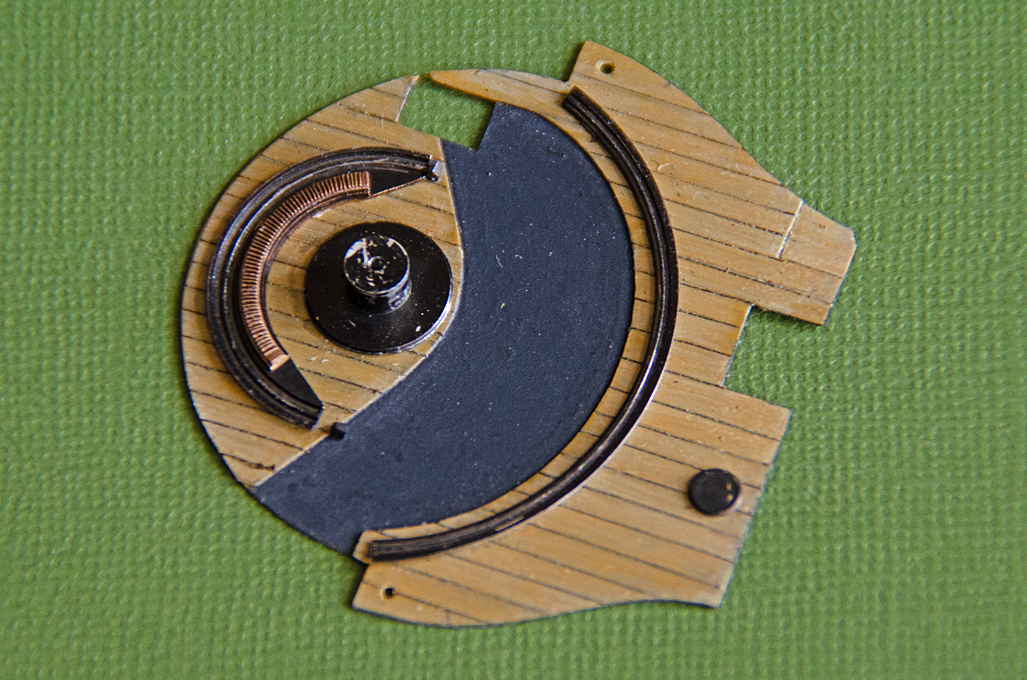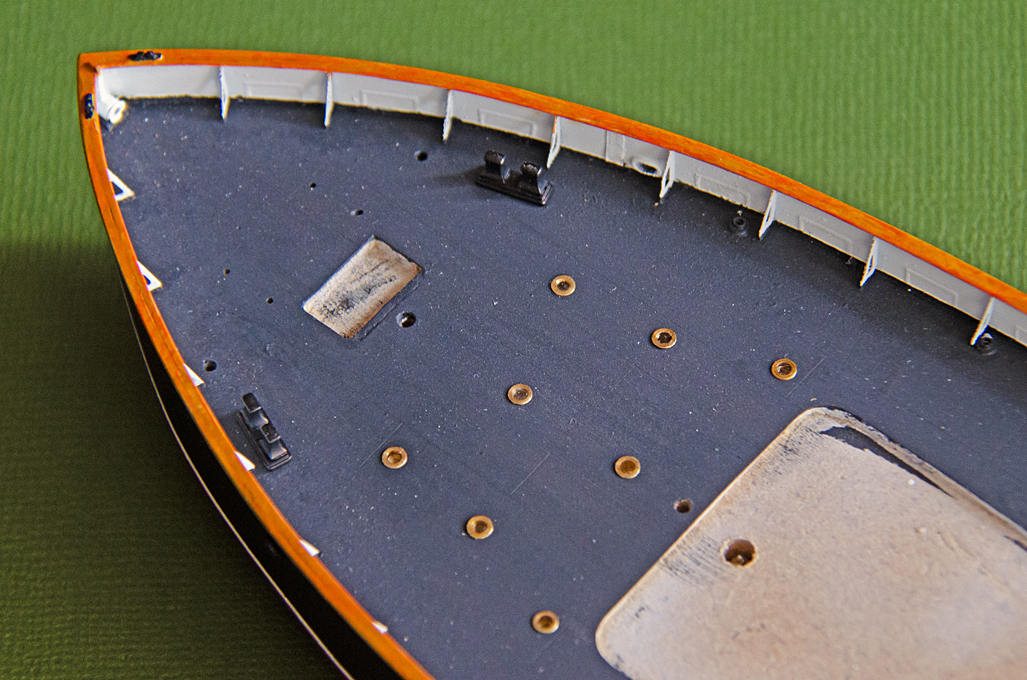Thanks Jim, for the idea with the layered decals. Haven't thought about this. I though about these German decals, but their lenghts were too short for this model and my original intention was to apply them full length, hence the white decal sheet. Now it is done, but I will sort this layered decal idea into my mental drawers for such tips

*******************************************
Kitting out the deckPainting the various parts takes quite a bit of time. Some parts can be spray-painted, while other parts need to be brush-painted because either they are difficult to mask for different paints or because the parts are too delicate for this.
The deck of the barbette was fitted with the pivot, races for the gun and the rack that is used in training it. These parts were made a long time ago. The races are turned from steel, because I always think nothing looks like metal as real metal. Although, the races were probably rolled iron (like railway tracks), they looked to bright. So they were painted black all over and then the areas that likely show wear from the rollers of the lower carriage were rubbed with a lead pencil. In some areas also the paint come off again. Overall this gives the races a used look. The toothed rack was bronze and hence was made from bronze.
There is also the lid of the opening through which the powder-charged was man-handled up from the powder-chamber beneath.
 Deck for the barbette with pivot and races for the gun installed
Deck for the barbette with pivot and races for the gun installedThe rear deck was fitted with the brass skylights that illuminated the quarters of the officers and other rooms. These were like portholes, but not moveable and had thick glass inserts. On the underside the inserts were shaped as multifaceted pyramids to collect and distribute the light from the deck above. The brass insert were turned and the glass simulated by pushing the brass parts into a drop of Acrifix 192 on a piece of smooth aluminium foil. The bright side of the aluminium-foils imparts a glass-like finish to the cured Plexiglas glue disc. I left the brass bright for a bit of contrast and interest to the deck. At the moment it looks to ‘model-like’, but over the years the brass will dull by oxidation to a more realistic colour and sheen – though I have no information on what they really looked like at that time. The glasses presumably dulled with time by the crew walking over them. It might have been better to imitate with a drop of white glue instead.
The double bollards and coal-scuttles (not visible on the image) were painted black as per prototype and installed
 Rear deck with sky-lights and bollards installedTo be continued ....
Rear deck with sky-lights and bollards installedTo be continued ....


